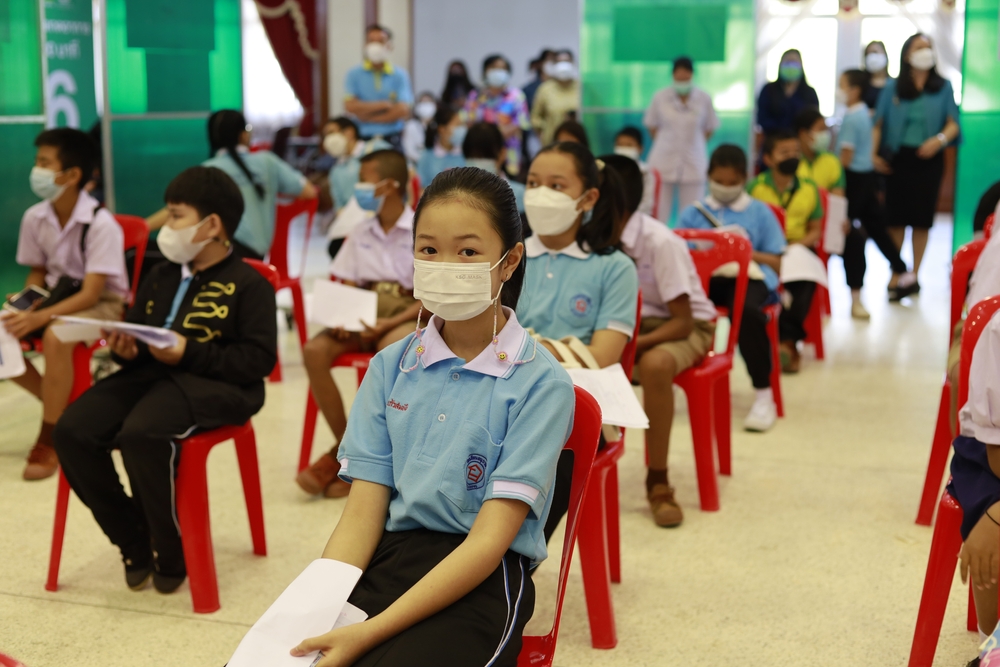Most Asian countries have vaccinated more than 80% of their children with MMR vaccines.
Measles, Mumps, and Rubella (MMR) are the three most common types of viral infection in children before a vaccine has been developed. The stand-alone measles, mumps and rubella vaccines have been previously licensed in the 1960s in the United States. The combined MMR vaccine was first made available commercially in 1971 and developed by Maurice Hilleman. Some countries like Korea, Japan, Singapore and China have reached more than 95% of vaccine coverage. However, there are still around 140 deaths per 100 000 live births in the low-income Asia-Pacific countries in 2017.
What are the symptoms of measles, mumps, and rubella?
All MMR infections can cause generalised tiredness, fever and loss of appetite. And all three diseases target people aged 15 and below.
Measles usually results in a rash, cough, and runny nose. Common complications include ear infections, pneumonia (lung infection), and brain damage.
Mumps usually leads to muscle aches, and swollen salivary glands, presenting with a swollen cheek. The mumps virus can also spread to the genital area and brain, resulting in local inflammation.
Rubella can cause itchy eyes and arthritis (swelling or tenderness in the joints). However, if a pregnant woman gets rubella, she could have a miscarriage, or the baby could be born with serious birth defects.
When should you get the vaccine?
In most countries worldwide, the MMR vaccine is included as a part of the childhood immunisation scheme. All children should receive two doses from age 12 months onwards, at least 4 weeks apart. In some countries, another booster dose is given at 4 to 6 years of age.
Adults without past infections or immunity should also get 2 doses of the MMR vaccine.
How is the vaccine given?
MMR vaccine is given as a subcutaneous injection (into the tissue layer between the skin and the muscle). A small needle is inserted from a 45-degree angle into your upper arm and the whole process takes less than 5 seconds.
How does the MMR vaccine work?
There are more than a dozen different brands of MMR vaccines available worldwide. Some even combine the MMR vaccine with varicella or tetanus in one shot. However, all the MMR vaccines are made as attenuated live virus vaccines. Once it is injected, our immune system recognizes it as a foreign virus and launches an attack. However, the virus itself has been weakened and is unable to launch an attack on our body and cause a real infection. Our immune system forms memory cells after the initial attack and can launch a much stronger and more efficient attack once we get into contact with the real MMR virus. One dose of MMR vaccine is 93% effective against measles, 78% effective against mumps, and 97% effective against rubella. Two doses of MMR vaccine are 97% effective against measles and 88% effective against mumps.
What are the side effects of MMR vaccination?
Unlike its COVID counterpart with so many side effects, the MMR vaccine has been generally considered safe. Minor side effects can happen but usually, they are not big causes of concern.
- Injection site reaction: swelling, tenderness, redness, warmth, or hard lump
- Low-grade fever
- General ill feeling
- Temporary pain and stiffness in the joints: mostly in teenagers or adult women who receive their first dose of the MMR vaccine
If you have children, it is important to keep an eye on them after they receive any type of vaccine injections. Always go to your doctor if you are unsure or worried about their symptoms.











